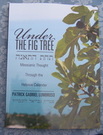The one who conquers, I will make him a pillar in the temple of my God.
While the children of Judah were exiled in Babylon, they witnessed the capture of their king, the devastation of their beloved Jerusalem, and the destruction of God’s Temple. Ezekiel the prophet was among the captives who, after all hopes were gone for the deported nation, was given the ministry of encouragement. Hashem used Ezekiel to encourage exiled in the Babylonian dispersion by telling them of the wonderful future of a rebuilt Jerusalem hosting a magnificent glorious temple where the Messiah Himself will serve (Ezekiel 40: and forward).
Oddly enough, as particular as Hashem can be on these things, the architectural plans and service details of the Messianic era Temple are different than those of the first Temple. When the captives returned and started rebuilding, it would have seemed natural that they would follow the blue print of Ezekiel’s prophetic temple but they did not. The prophets of the day believed that the temple they were to build right after their return from Babylon would not last forever. So whereas they decided to incorporate some of Ezekiel’s plan, they stuck close to the layout of the first temple. They understood that the Temple of Ezekiel’s vision belonged to another time, to the time pertaining Messiah’s actual reign on earth.
Since Ezekiel’s Temple prophecies have therefore not been fulfilled, they now serve as an encouragement for us who are still in dispersion, for all believers are strangers and exiles on this earth (Hebrews 11:13) waiting to return to where we belong in the Kingdom of God.
So whatever upheaval we see in the Middle-East, we must fix our eyes on these prophecies which tell us of the glorious future of the Messianic age when Messiah Himself who has the true roadmap for peace in the area will reign from His Temple in Jerusalem. The Torah will be the Law of the Land flowing out of Zion to fill the nations of the world who will bring their glory to Jerusalem. It will be a time of great restoration when Messiah Himself will wipe our tears away while bringing true justice to the world.
May it come soon Abba, even in our days!
 RSS Feed
RSS Feed


